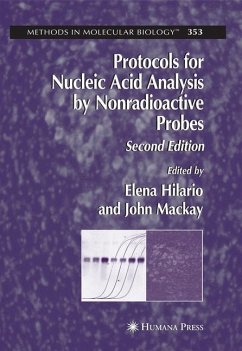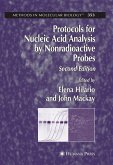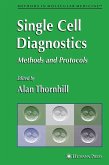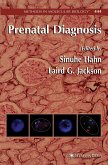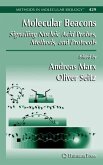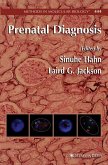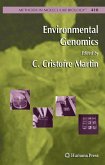Protocols for Nucleic Acid Analysis by Non-radioactive Probes, Second Edition provides a firm background on the basic preparative protocols required for the analysis of nucleic acids by nonradioactive methods. Presenting the methodologies using amazing new applications, this volume offers guide chapters on nucleic acid extractions, preparation of nucleic acid blots, and labeling of nucleic acids with nonradioactive haptens. New fluorescent techniques such as Real Time PCR and microarrays are also included, allowing users to get a nonradioactive protocol implemented in the laboratory with minimum adaptation required and fastest time to results.
The protocols follow the successful Methods in Molecular Biology(TM) series format, each offering step-by-step laboratory instructions, an introduction outlining the principles behind the technique, lists of the necessary equipment and reagents, and tips on troubleshooting and avoiding known pitfalls.
The protocols follow the successful Methods in Molecular Biology(TM) series format, each offering step-by-step laboratory instructions, an introduction outlining the principles behind the technique, lists of the necessary equipment and reagents, and tips on troubleshooting and avoiding known pitfalls.
From the reviews of the second edition:
...this book provides a collection of good protocols which are in general clearly written. They can be easily employed on the bench without being a specialist in a particular fields. - FEBS Letters
...Covers the basics of a variety of probe-labelling systems very well...a very interesting read. It could save you money and trouble from the radiation safety officer.-Biotechnology and Applied Biochemistry
"This is a set of protocols for various types of nucleic acid analysis using nonradiocative methods. ... The goal is to provide protocols for nucleic acid analysis using other than radioactive reporter systems. This approach is commonplace at present, so a volume of practical utility has merit. ... The target audience would be research laboratory personnel working in this general area. The editors have recruited a group of contributors with worldwide representation." (Eugene A Davidson, Doody's Review Service, November, 2007)
"The editors of this volume have gathered together a variety of protocols for anyone who wishes to use nonradioactive methods for the analysis of their chosen nucleic acid molecules. ... Combined with the excellent overviews on microarrays as well as hybridization and detection techniques, and several useful assays for the application of these techniques for nucleic acid analysis, scientists will find this book handy for their research and educators will adopt it as a useful teaching tool for advanced students." (Tzvi Tzfira, The Quarterly Review of Biology, Vol. 83, 2008)
...this book provides a collection of good protocols which are in general clearly written. They can be easily employed on the bench without being a specialist in a particular fields. - FEBS Letters
...Covers the basics of a variety of probe-labelling systems very well...a very interesting read. It could save you money and trouble from the radiation safety officer.-Biotechnology and Applied Biochemistry
"This is a set of protocols for various types of nucleic acid analysis using nonradiocative methods. ... The goal is to provide protocols for nucleic acid analysis using other than radioactive reporter systems. This approach is commonplace at present, so a volume of practical utility has merit. ... The target audience would be research laboratory personnel working in this general area. The editors have recruited a group of contributors with worldwide representation." (Eugene A Davidson, Doody's Review Service, November, 2007)
"The editors of this volume have gathered together a variety of protocols for anyone who wishes to use nonradioactive methods for the analysis of their chosen nucleic acid molecules. ... Combined with the excellent overviews on microarrays as well as hybridization and detection techniques, and several useful assays for the application of these techniques for nucleic acid analysis, scientists will find this book handy for their research and educators will adopt it as a useful teaching tool for advanced students." (Tzvi Tzfira, The Quarterly Review of Biology, Vol. 83, 2008)

